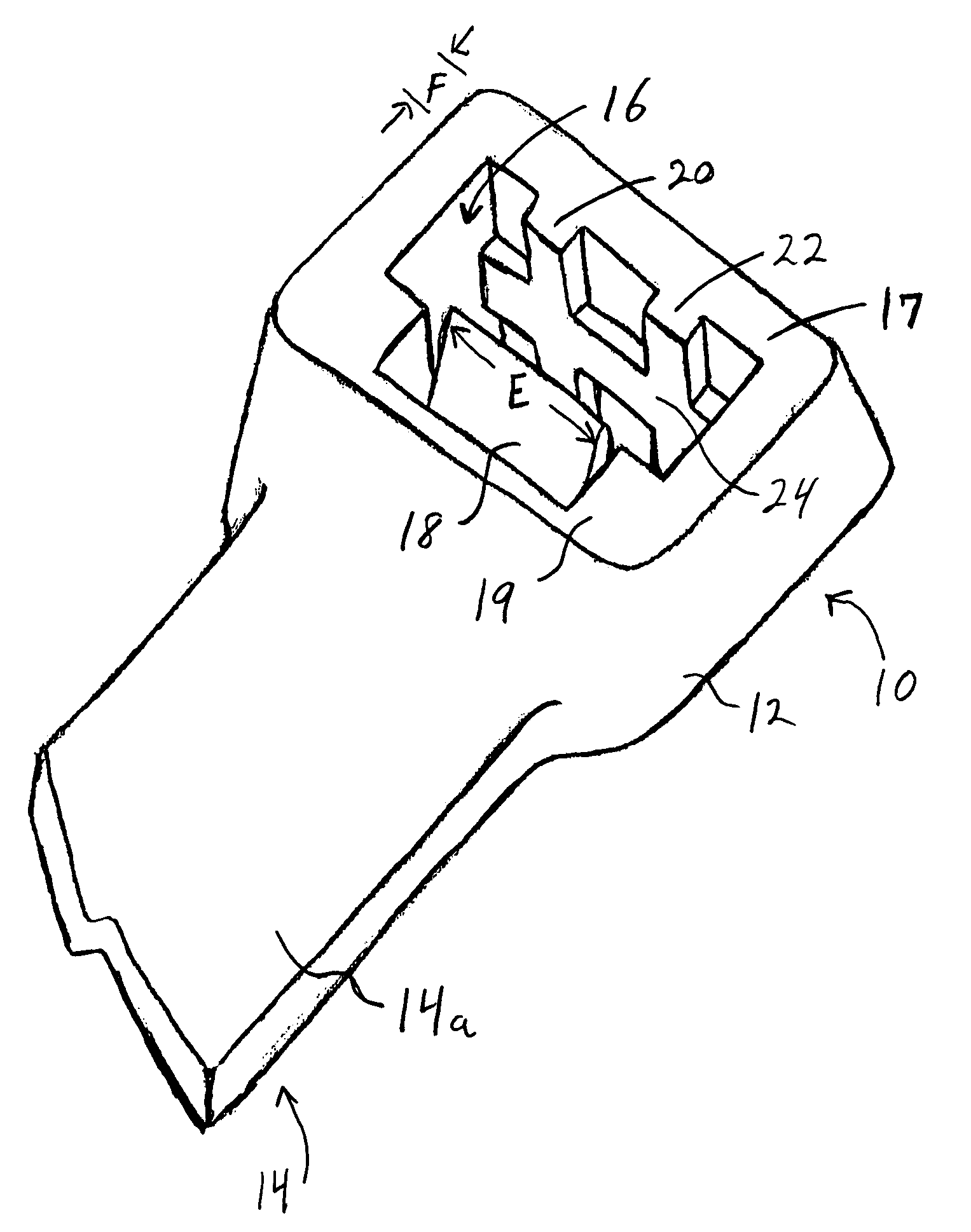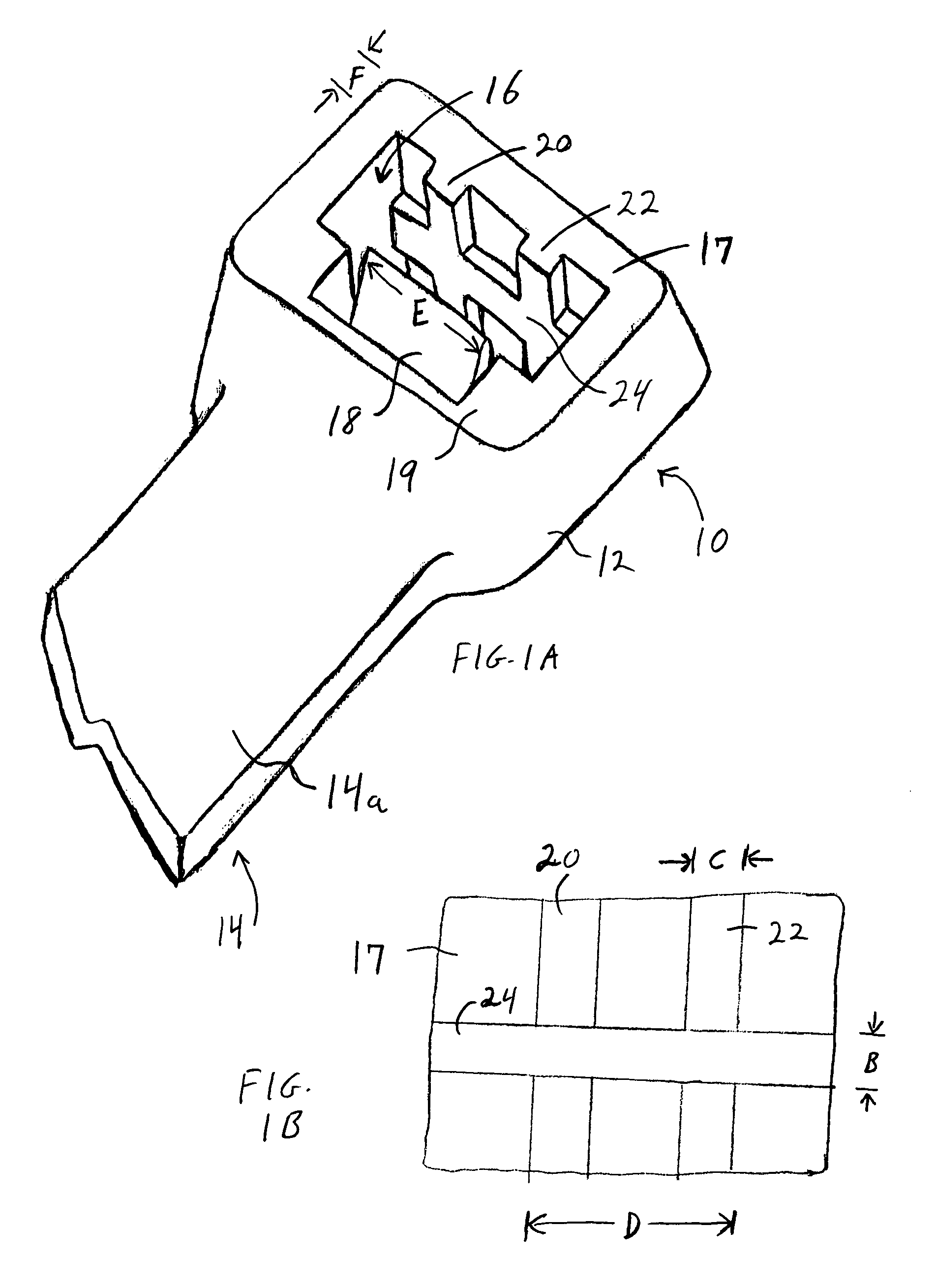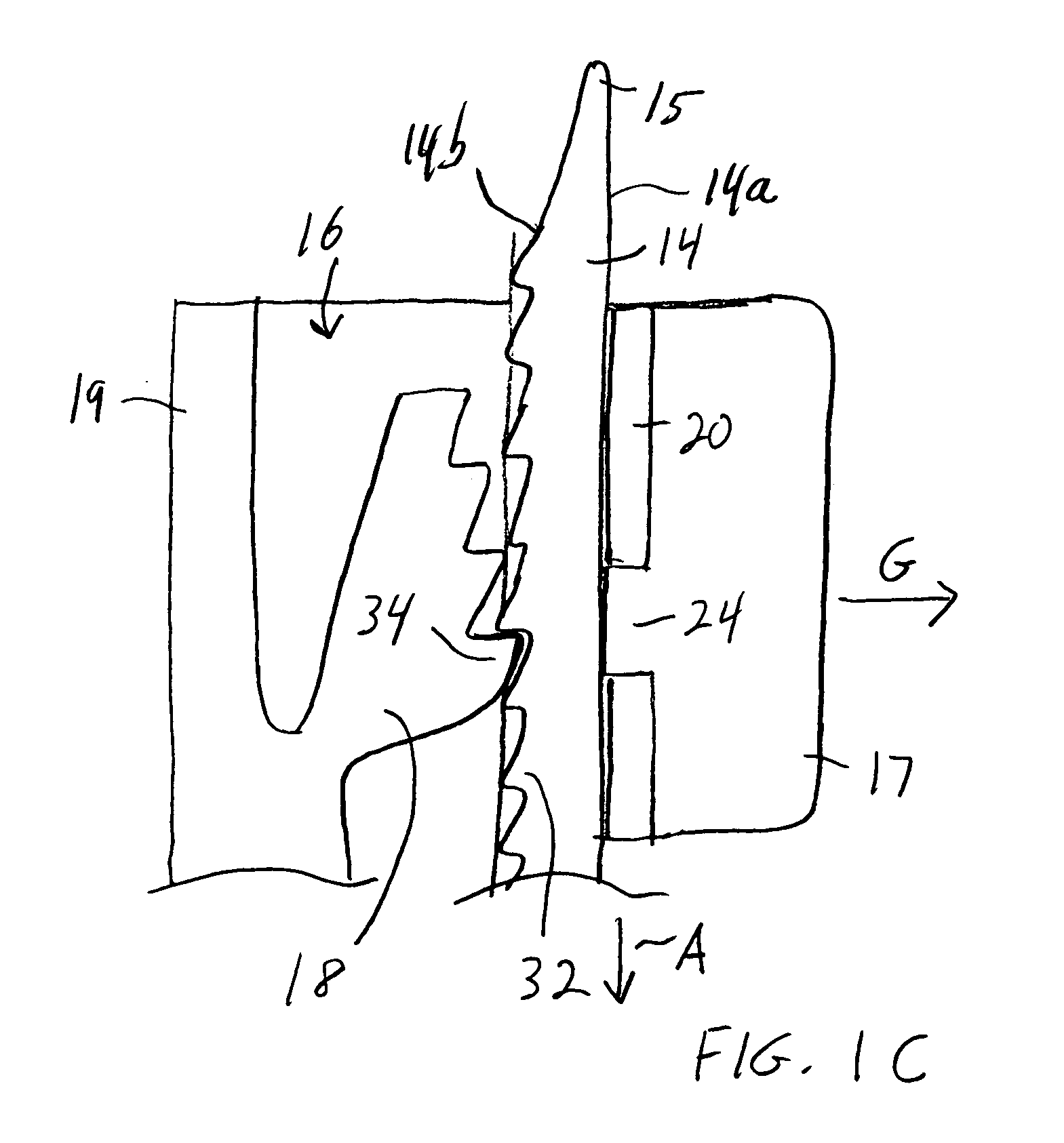Cable tie
a cable tie and a technology of abutment wall, applied in the direction of hose connection, flexible element, packaging, etc., can solve the problems of ratchet teeth being released from the pawl, product would be extremely difficult to manufacture, etc., and achieve the effect of short mold residence time and increased rigidity of the abutment wall
- Summary
- Abstract
- Description
- Claims
- Application Information
AI Technical Summary
Benefits of technology
Problems solved by technology
Method used
Image
Examples
Embodiment Construction
[0020]The invention may be accomplished in a cable tie in which the abutment wall of the cable tie head is reinforced with at least two transverse cross members located on one or both surfaces of the abutment wall. The cross members reinforce the wall to inhibit its buckling under substantial loads, while maintaining a profile that does not substantially increase the residence time required in the mold to solidify the abutment wall.
[0021]FIGS. 1A–1C depict a preferred embodiment of the inventive cable tie. Cable tie 10 comprises elongated tongue 14 with broad upper side 14a and broad lower side 14b. Head 12 is located at one end of tongue 14, and tip 15 at the other end. Locking head 12 defines opening 16 for receiving tip 15 of tongue 14. Integral moveable pawl 18 is hinged at side 19 of head 12. Across opening 16 from pawl 18 is abutment wall 17. Wall 17 is strengthened by the inclusion of at least one protruding cross member. Although the cross member or cross members can be loca...
PUM
 Login to View More
Login to View More Abstract
Description
Claims
Application Information
 Login to View More
Login to View More - R&D
- Intellectual Property
- Life Sciences
- Materials
- Tech Scout
- Unparalleled Data Quality
- Higher Quality Content
- 60% Fewer Hallucinations
Browse by: Latest US Patents, China's latest patents, Technical Efficacy Thesaurus, Application Domain, Technology Topic, Popular Technical Reports.
© 2025 PatSnap. All rights reserved.Legal|Privacy policy|Modern Slavery Act Transparency Statement|Sitemap|About US| Contact US: help@patsnap.com



